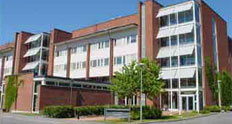Sandra Ceccatelli, M.D., Ph.D.

Sandra Ceccatelli, M.D., Ph.D.
Research Focus
Our group is interested in developmental neurotoxicology, with special reference to the issue of silent toxicity and long-term consequences induced by environmental factors acting during different stages of neurodevelopment. There is a lack of information on the overall magnitude of environmental neurotoxicity, and this has increased the concern that the etiology of some neurodevelopmental dysfunctions may be associated with exposure to neurotoxic events. We have directed our efforts toward the implementation of an experimental strategy that includes in vivo and in vitro models and applies methods stretching from behavioral to single cell analyses. We have introduced the observation of home cage behaviour as a key component of neurotoxicity testing. A major part of our work focuses on the mechanisms of cell defense and cell death induced by neurotoxic stimuli, including exposure to high levels of reactive oxygen species, steroid hormones, cytoskeletal disrupting agents, heavy metals and endocrine disruptors. A central aim is to provide mechanism-based endpoints for the identification and characterization of stimuli with neurotoxic potential.
Selected Publications
Galanin decreases proliferation of PC12 cells and induces apoptosis via its subtype 2 receptor (GalR2.
Proceedings of the National Academy of Sciences U.S.A 1057: 2717-2722, 2008
Developmental exposure to methylmercury alters learning and induces depression-like behavior in male mice.
Toxicological Sciences 97: 428-437, 2007
High susceptibility of neural stem cells to methylmercury toxicity: effects on cell survival and neuronal differentiation.
Journal of Neurochemistry 97: 69-78, 2006
Opening of plasma membrane voltage-dependent anion channels (VDAC) precedes caspase activation in neuronal apoptosis induced by toxic stimuli.
Cell Death and Differentiation 2: 1134-1140, 2005
Differential regulation of the mitochondrial and death receptor pathways in neural stem cells.
European Journal of Neuroscience 19: 2613-2621, 2004
Karolinska Institutet
Nobels väg 13 (IMM)
S-17177 Stockholm, Sweden

